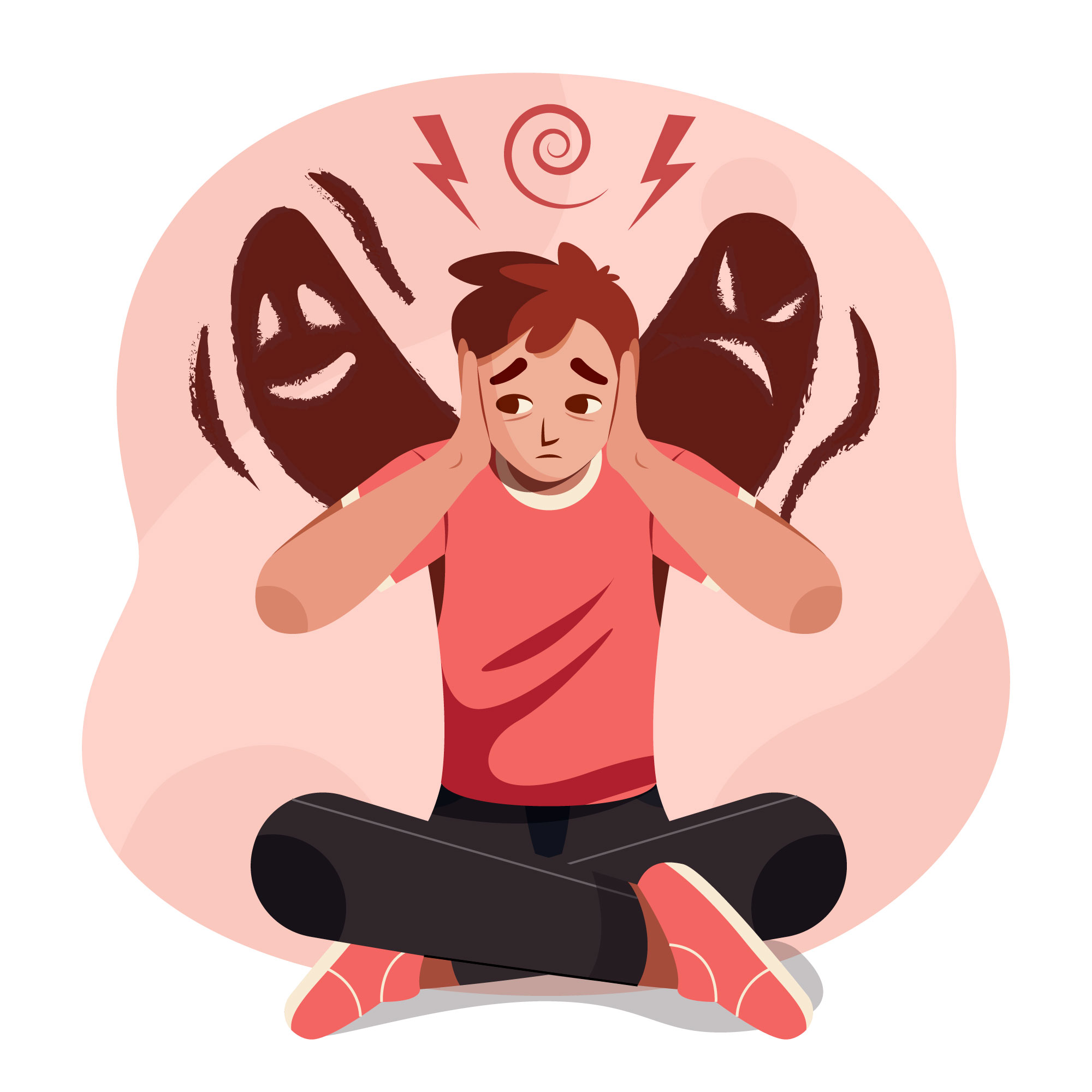Phobia Treatment and Counselling Milton Keynes
We offer real solution call us today on 03300100275

We offer real solution call us today on 03300100275


Phobias are anxiety disorders of varying severity marked by extreme and irrational fear of an object, place or situation or of a particular activity. It can become so severe someone feels completely unable to function normally, and undergoes extensive avoidance as a result.
For example, a person who has arachnophobia will not want to go outside or enter specific rooms out of fear of seeing a spider. The road to conquering those fears includes a variety of treatment options like counseling, CBT (Cognitive-behavioral therapy), and exposure therapy, to name a few options. These treatment methods are focused on the underlying issues surrounding the phobia, and revolve around enabling the individual to face their fears in a safe and controlled environment.
Professional help is important for persons suffering from phobias.
It might prevent it from becoming deeply ingrained in the person's mind and improve the quality of life for the person and bring down symptoms of anxiety, cunningham said. It is pertinent to consider an intervention that is adapted to the needs and preferences of the individual, given that such personalised interventions can substantially enhance the efficacy of the intervention. An individual who has a fear of flying, for instance, might be helped by a mix of CBT for negative thinking patterns and exposure therapy undertaken through virtual reality simulations of air travel. It’s for this reason that it is so important to understand the treatment options which are available, as well as the importance of seeking the right professional help in order to find the road to recovery.
Types of phobia -Phobia are strong, unreasonable fears that can be crippling to an individuals life There are two types of phobia -Specific -Complex Simple phobias tend to occur in childhood and are characterized by drastic fears of particular objects or circumstances.
These might include fears of particular animals say snakes or spiders or experiences such as flying or having an injection. An example of a specific phobia treatment is one for arachnophobia, in which the sight and thoughts of spiders precipitate anxiety and sufferers will excessively avoid entering those places where spiders could potentially be found.
This in turn can lead to substantial curtailment of individual freedom and everyday routines.
In contrast, complex phobias are typically acquired later in life and entail a deeper level of anxiety that is related to a generalised mental health issue. Complex phobia: This means an unrealistic fear of either an object or a situation (social anxiety disorder is an example of this), where the affected persons constantly dread acting foolish or being humiliated.
And agoraphobia is a fear of being in places or situations where escape might be difficult, or help wouldn’t be available if things go wrong. Those with complex phobias may also share some redolent with panic attacks, such as racing heart, overwhelming terror, or even depression, and causing as a result their social interactions awkward as their functioning in daily life, although the absence of a direct in situ or expected danger.
These more specific phobias are at the core of many cycles of avoidance and anxiety resulting in marked impairment for the sufferer.
The Role of Cognitive Behavioural Therapy Milton Keynes (CBT) In Overcoming Phobia Milton Keynes
Cognitive-Behavioural Therapy (CBT) has an essential place in the management of phobias providing evidence-based and structured means by which to face up to and address one's irrational fears. By examining and addressing the complex interplay between thoughts, feelings and behaviour, CBT helps people to understand and challenge the irrational thoughts that perpetuate their phobic responses.
And through the journey it not only helps in breaking the cycle of fear but also helps in giving practical tools to manage anxiety. Patients learn they are able to tolerate more exposure to their feared object or situation in a safe environment.
An example of a classic case of CBT efficacy is exposure therapy to treat phobias: The person is asked to repeatedly confront the object of fear (e.g. dirty hands, or, in this case, a spider), which, over time, causes the fear to diminish (or even disappear). Similarly, a patients’ harmful ways of thinking can be prevented (or ameliorated) using CBT techniques.
Further, the flexibility of CBT lends itself to customization depending on the individual patient, which is an incredible asset in the comprehensive phobia treatment armamentarium. Studies repeatedly show that CBT effectively decreases anxiety symptoms, and avoidance behavior related to phobias, which can translate into substantial gains in quality of life.
The therapy works because it operates on two levels: changing the underlying thought processes behind the phobia and then desensitising the individual to the feared stimulus through exposure. And these sorts of thorough treatments ensure folks not only master their immediate anxiety, but also develop long-term immunity to phobic triggers. It is well-established that CBT has proven to be successful in the treatment of phobias, demonstrating an ability to equip individuals with the skills to confront once fearful situations with resurged confidence.
Exposure therapy represents a fundamental part of treatment for many phobias: it involves a systematic process of incrementally exposing people to what they fear in a safe and controlled environment see more here: https://milton-keynes.direct-therapy.org.uk/phobia-treatment-and-counselling/.
This treatment is based according to the theory of desensitisation, which is that repeated and controlled exposure to the fear reduces the severity of the emotional response over time. The classic, textbook version of this method is that of its role in the treatment of arachnophobia (fear of spiders), in which patients are exposed, in small degrees by a therapist, to the idea of spiders, pictures of spider and finally, spiders, which in turn enables them to face and ultimately handle their fear of the creature.
The development of the Virtual Reality (VR) technology has brought a new edge to exposure therapy allowing for realistic simulations of frightening situations in an adaptable and immersive environment. With VR, perfectly controlled environments can be crafted, replicating the direct stimuli of a person’s particular phobia without the logistical challenges and safety risks of physical exposure.
For example, people who are afraid of flying can use VR to go through all parts of a flight, from boarding to take off and landing, while sitting in a therapist’s office. This allows to not only have access to exposure therapy, but also to have some way to approach fears off the clock, so to speak, and learn about fear in order to better manage it.
With these new methods, exposure therapy with the added benefit of VR, is a promising way forward for individuals struggling with phobias, and increasing the effectiveness and options for treatment.
Counselling in the erasure of phobias represents more than a treatment – as well as enabling the return to an untroubled mind, it serves as an emotive support system, bringing insight and confidence for those whose lives are dominated by these common phobias. These fears are usually quite embedded due to years of avoidance and thinking patterns that reinforce them, they must be addressed with a careful hand.
Therapy involves a number of strategies, which are customized to the patients particular phobia and history. Graded exposure tasks and exercises reintroduce people to their fear in increments, so that it is more manageable, and help to build up tolerance to the fear whilst decreasing levels of anxiety.
Role-playing and cognitive restructuring, on the other hand, offer the individual an opportunity to actually face down their fear and reevaluate it in a safe setting, combatting and reconstructing the warped thoughts that leave to their phobic reaction.
An important aspect of successful CBT is the collaborative relationship between the therapist and the client. This alliance also engenders a feeling of trust and security which is necessary for the client to be able to fully participate in therapeutic work. Through the medium of collaboration, clients are invited to try out new ways of being about their phobia, supported and guided by their counsellor.
In collaborative experiments of this sort subjects may be confronting the distorted patterns of thought to which they have consensually acquiesced and avoidance behaviors that have perpetuated the phobia. This practical and supportive method not only assists with addressing the phobia straightaway, but enables people to feel confidence and equipped to manage their progress lasting, the end result is they will dramatically improve their life!
Drug Choices and their Use in Phobia Treatment
Medication is an essential part of the treatment regimen for phobias, especially in people with unbearable anxiety symptoms interfering with functioning or with attempts to engage in exposure therapy. The pharmacological treatment approach to anxiety disorders such as phobia often includes the use of Selective Serotonin Reuptake Inhibitors (SSRIs) and beta-blockers to treat the physiological symptoms of anxiety which are associated with those who have phobia, e.g., increased heart rate, trembling, etc.
SSRIs, in particular, can raise levels of serotonin in the brain, Satow notes, which in turn can boost mood and lower anxiety, leaving people in a better position to tackle their fears in therapy.
Tranquillisers Other medications that might be prescribed for the short-term treatment of an acute anxiety episode include tranquillisers, other than SSRIs or beta-blockers. However, they are not widely used for fear of dependency and withdrawal. It’s critical that healthcare professionals thoughtfully evaluate every person’s circumstances and work with every individual to develop an individual approach to medication and treatment that includes therapy.
This balanced approach has the advantage of being able to offer relief from severe anxiety, when such is appropriate, medication for the individual, but it also allows for the underlying causes of phobias to be tackled by other therapeutic processes such as CBT or exposure therapy so that a full recovery is more likely.
In Choosing the Right Therapist for Treating or Recovering from Phobias goes a long way towards a positive result.
The most important qualification is quite literally a strong understanding of phobias and experience in treating them with proven, tailored approaches.
Specialist therapists in phobias will likely employ a range of methods, such as cognitive-behavioural therapy (CBT) and exposure therapy, which are highly successful for a wide range of phobias.
For example, a CBT-trained therapist can assist someone with arachnophobia (a fear of spiders) in slowly testing and reframing their irrational beliefs about spiders.
And there is also the therapeutic alliance itself, one of the most important factors to recovery. Ask a therapist who uses empathy, understanding, and patience can make the difference in soaring heights of engagement with treatment and fear facing.
Such techniques as relaxation and guided imagery serve not only to reduce anxiety but to ready people for exposure therapy to the extent it establishes a “safe place” in the mind where they can gradually confront fears without unbearable distress.
To normalize fear, and actively encourage help seeking, is a constantly recurring part of the healing process.
By creating an non-judgmental atmosphere, therapists can encourage those affected to take concrete action to conquer their phobias.
The path to recovering from phobias starts with gaining an understanding of what phobias are and the different kinds there are, exploring the risk treatments for phobias and embracing the fact that therapy is crucial in overcoming such debilitating disorders.
There are CBT and /or exposure therapy, for example, two different methods that have demonstrated a great success of treatment for phobias, primarily by altering negative thinking patterns, and in the case of exposure therapy reducing the physical response to fear, over time. When people confront and manage fears directly, they learn that fears are outside of them – not within them – and have less power over them.
And for some people, medication combined with therapy and counseling can bring added relief from anxiety so severe they can't even attend therapy or counseling sessions.
The journey of each individual is different and it is important to tailor treatment of the disease to a patient’s needs, values and preferences.
By reaching out for professional treatment and making positive moves towards treatment people can take control of their lives that they’ve given over to their fears and be in a better place in the future where fear is no longer acting as a handbrake on them fully experiencing life.
